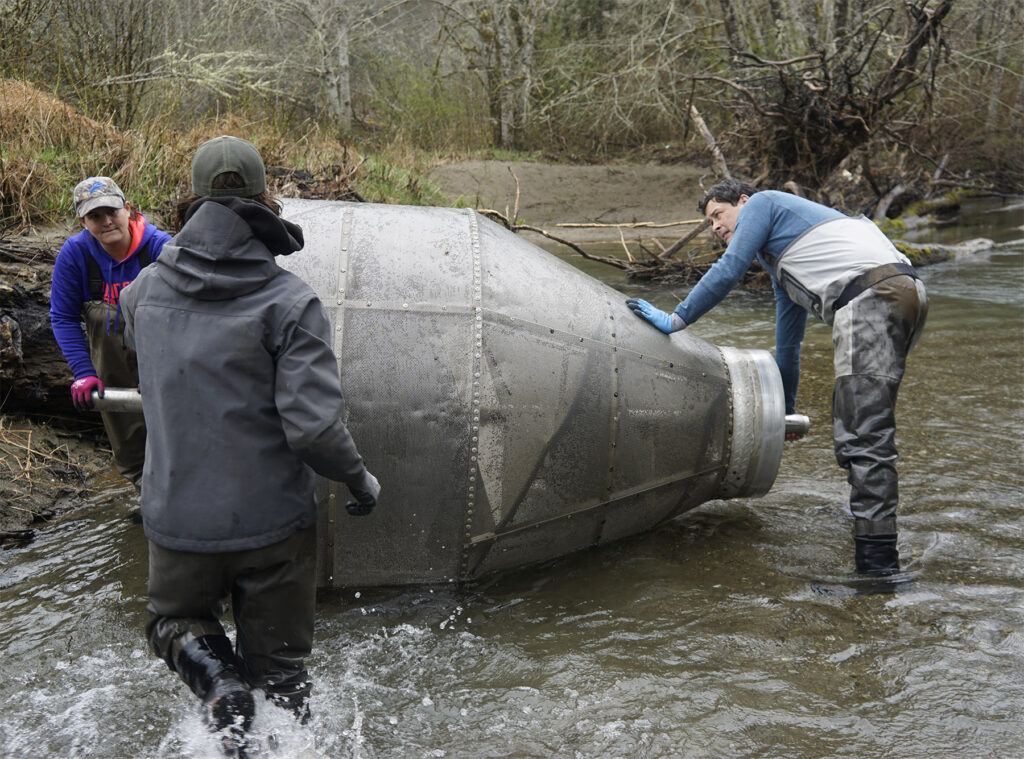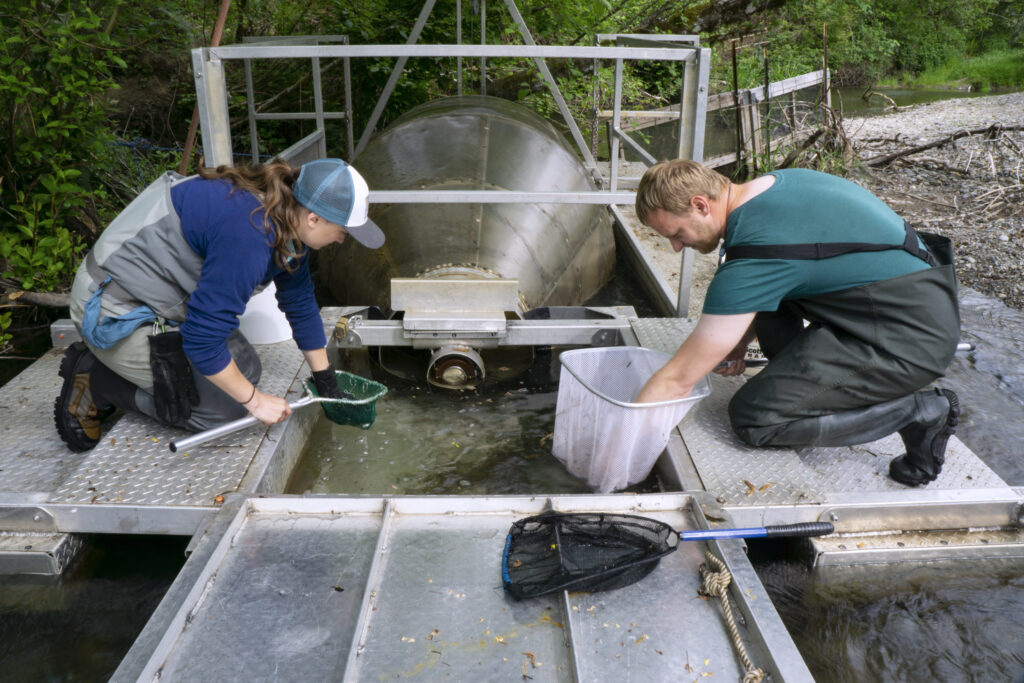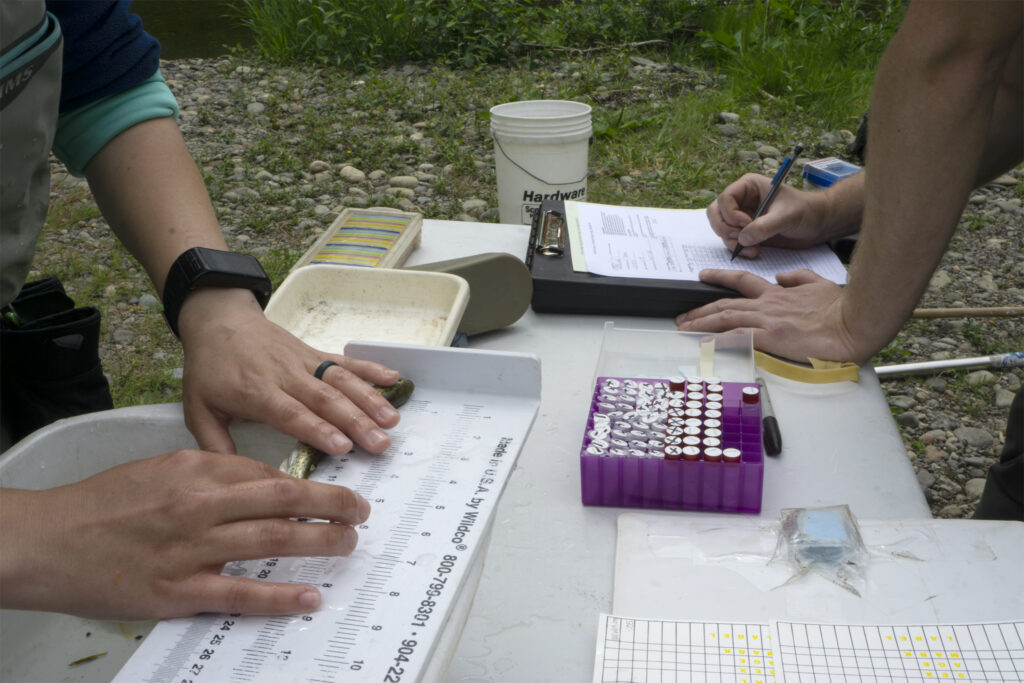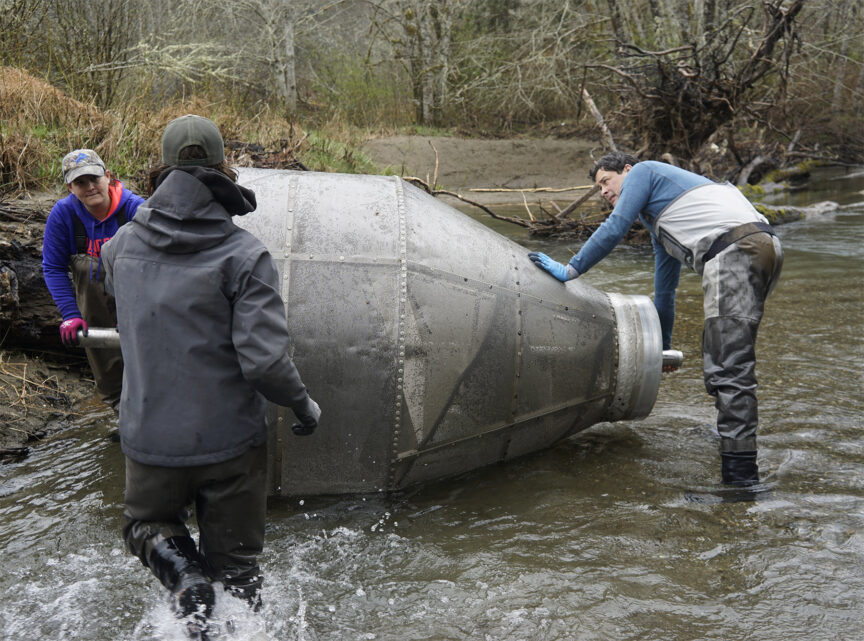
In many rivers of Western Washington, springtime is the period when adult steelhead turn the corner from the end of the modern-day peak migration into natal rivers and slowly move onto their spawning beds. This season also kicks off the outmigration of 2+-year-old steelhead smolts as they begin their journey from their home water and out into the North Pacific Ocean.
For steelhead biologists and managers, capturing data across all life histories is a key part to understanding survival, abundance, and overall steelhead population dynamics. Ongoing efforts to collect this data for Hood Canal steelhead is part of the recovery strategy for these depressed populations and is important work that is often supported by volunteers.
Starting this month and running through May, the Hood Canal Salmon Enhancement Group (HCSEG) is seeking volunteers to help with their monitoring of juvenile steelhead smolt traps.
HCSEG Communications Manager, Alexandra Ehrich, joins us with more information about the available opportunities and the Hood Canal Steelhead Project:

Image: Alexandra Ehrich/HCSEG
The Hood Canal Steelhead Project is a 16-year project (2007-2022) that aims to restore three steelhead populations in Hood Canal while evaluating the effectiveness of hatchery supplementation as a conservation strategy for steelhead.
The current project is an expansion of the Hamma Hamma River Steelhead Supplementation Project and includes three additional supplemented streams (Duckabush River, Dewatto River, Skokomish River) and three control streams (Little Quilcene River, Tahuya River, Big Beef Creek). The general strategy of this project is to collect fertilized eggs from naturally constructed redds in the Duckabush, Dewatto, and Skokomish Rivers (occurred between 2007-2014). The fish are reared in hatcheries until they are released back into their natal rivers. Before, during, and after supplementation (supplementation ended in 2015), the project monitors adult and juvenile abundance, genetic composition, and life-history patterns in all study streams. The project is a large collaborative effort between the Hood Canal Salmon Enhancement Group (HCSEG), Long Live the Kings, NOAA, WDFW, USFWS, USFS, the Skokomish Tribe, Point No Point Treaty Council, and Port Gamble S’Klallam Tribe. HCSEG’s focus is to carry out field work and steelhead smolt trapping on the Tuhuya, Dewatto, and Little Quilcene rivers.
This project is truly the first of its kind. It does not rely singularly on hatchery supplementation, and instead investigates the resiliency of our Hood Canal steelhead to see if they are able to sustain recovery without continued support.

Image: Alexandra Ehrich/HCSEG
HCSEG is seeking community volunteers to assist in monitoring steelhead traps on the Dewatto, Tahuya and Little Quilcene Rivers from April 1 to May 31. Monitoring efforts are critical for the success of this project, and as a small grassroots nonprofit, HCSEG volunteer support is essential. Through monitoring we discover barriers to the growth of our Hood Canal wild steelhead populations and can make moves to address them. This project’s monitoring has revealed the devastating impacts of the Hood Canal Bridge on steelhead mortality, leading to the Long Live the King’s Hood Canal Bridge Ecosystem Impact Assessment and progressive moves to find both long and short-term solutions for this barrier.
To play a part in wild steelhead recovery in Hood Canal and contribute meaningful research to the Hood Canal Steelhead Project, register and sign-up to volunteer here.
Watch this video from WSU ambassador, Lee Geist, of a Hood Canal rotary screw trap installation.


